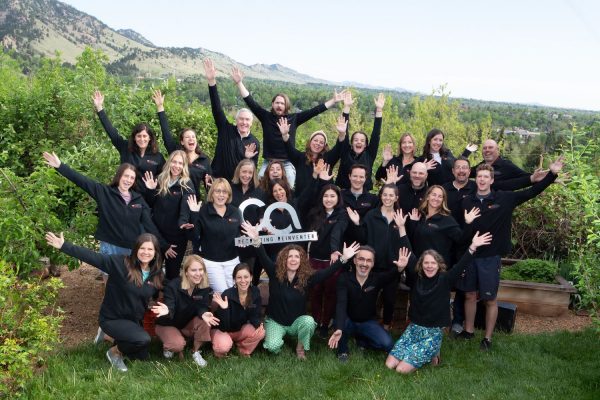Recruiting 101:
DIY tips to finding the candidates you need to take your CPG company to the next level
by Creative Alignments

Recruiting is hard. For most entrepreneurs, the people aspect of business is the most challenging, and the one they are often least prepared to tackle. Since you can’t build a business without the right people in the right seats, it’s also arguably the most important part.
Moreover, investors are investing heavily in the people of early stage companies. Having a strong team and a hiring strategy in place can make your company more attractive to potential investors.
So let’s ramp up your recruiting expertise with some Do-It-Yourself recruiting tips to put to work right away. (This article is one in a DIY recruiting series, starting with a focus on how to build a talented candidate pool.)
Approach recruiting as a sales and marketing function
Rather than only approaching recruiting from the perspective of what you need from a potential employee, also think about why someone would want to work for your company. What’s in it for them?
You’re not just selling your product or service to consumers. You’re also building your brand as an employer. Marketing strategy should include showing potential candidates what it’s like to work for your company so they can get a feel for the experience and the opportunity. This is known as “recruitment marketing.” This is different from your “employment brand,” which is your reputation as an employer.
Just as you do with consumer branding, clarify your differentiators. Do you offer an inspiring product that is making a positive impact? Are you committed to creating a great company culture? Does your company have outstanding growth potential led by industry veterans who would be great mentors? Lean into what sets you apart as an employer and tell the story via:
- An inspiring careers page on your website that communicates the employee experience, complete with company values, and mission.
- Social media posts targeted at potential employees (especially on LinkedIn).
- A fun video of your team (founder message, day in the life of, etc.)
- A Glassdoor page that you manage regularly.
- Job ads that are exciting and informative, vs. a list of requirements.
- A positive applicant experience at each stage (timely communications and updates, clear expectations).
Your first hires are your most important. Taking shortcuts can get you lost.
Creative Alignments is commonly asked by early stage companies: “How do I know which function to hire first?” The answer is different for each company, but there are a few rules of thumb and things to have in place first.
Hire people who know more than you and complement your areas of weakness. For instance, if you are a visionary, you’ll want someone who is tactical, organized, and can execute on your vision.
- Layout an organizational structure that’s smart for any CPG business and lean on the resources you already have to fill in gaps where possible. It may be that you can get help from a contractor and not need to hire a full-time person for a particular role quite yet.
- When you do identify the needs you need to hire for, be realistic about the job title, description and expectations. Hiring a marketer/finance/operations person is probably not going to serve you well because each of those functions need different skill sets.
- Create a competitive package to attract and retain good people, even as an early-stage company. It is costly to have turnover and empty seats.
- If raising capital, include a realistic budget for hiring.
- Develop an interview plan and scorecard to consistently weigh candidates against each other to identify the best fit.
Your next employee most likely already has a job.
Hiring your brother’s neighbor’s cousin because they are available and inexpensive is not typically the best idea. Instead, identify what your company needs and who can do it best to help you meet your goals.
Posting open roles on your company’s website and industry job sites may net you a pile of applicants from “active candidates” (those who are looking for a job), but they may not be the most relevant.
Expand your search to also include people who are not actively looking but may be interested, given the right opportunity (“passive candidates”). Consider who is already doing an outstanding job in a similar role and tap them on the shoulder. You can find highly qualified candidates by:
- Leveraging your connections, industry events, etc. Ask who knows of someone and have your network spread the word.
- Leveraging LinkedIn as a marketing tool (search connections and share news of your opening so your network can help you promote career opportunities at your company).
- Leveraging LinkedIn as a recruiting tool (buy a LinkedIn job posting, use advanced LinkedIn search tools).
- Using Boolean search techniques or tools like Seekout to help you uncover the most relevant talent for your role.
- Holding an open house or networking event at your company to expand your community.
- Creating an employee referral program with good incentives.
- Being open to looking outside your specific industry for people who are doing the same function in another area. This can also help you build a diverse pool of candidates, bringing in new experiences, perspectives and identities.
- Don’t poach from your friends!
Define and prioritize the hard and soft skills needed for success
It’s a common perception that a certain degree, working in a particular industry, or having a specific number of years of experience will make someone successful in a given role. However, if you have rigid requirements, you can miss out on amazing candidates, and you will likely build a homogeneous candidate pool.
- Think expansively and creatively about what kind of person could be successful. What skills or capabilities are expected from someone with that degree or that experience and who else might have them?
- Distinguish between the must-haves and nice-to-haves. What does someone absolutely need to be to succeed in the role vs. what can be learned on the job?
- Consider how requirements in a job description may cause great candidates to opt out from applying. For instance, studies show that women and people of color are less likely to apply for a job unless they meet all the job requirements, so this is also an important step in creating a diverse candidate pool.
- Use tools to remove unintended bias language in your job description.
Stay tuned for our next article, focused on DIY tips for interviewing candidates to find the best.





All Comments